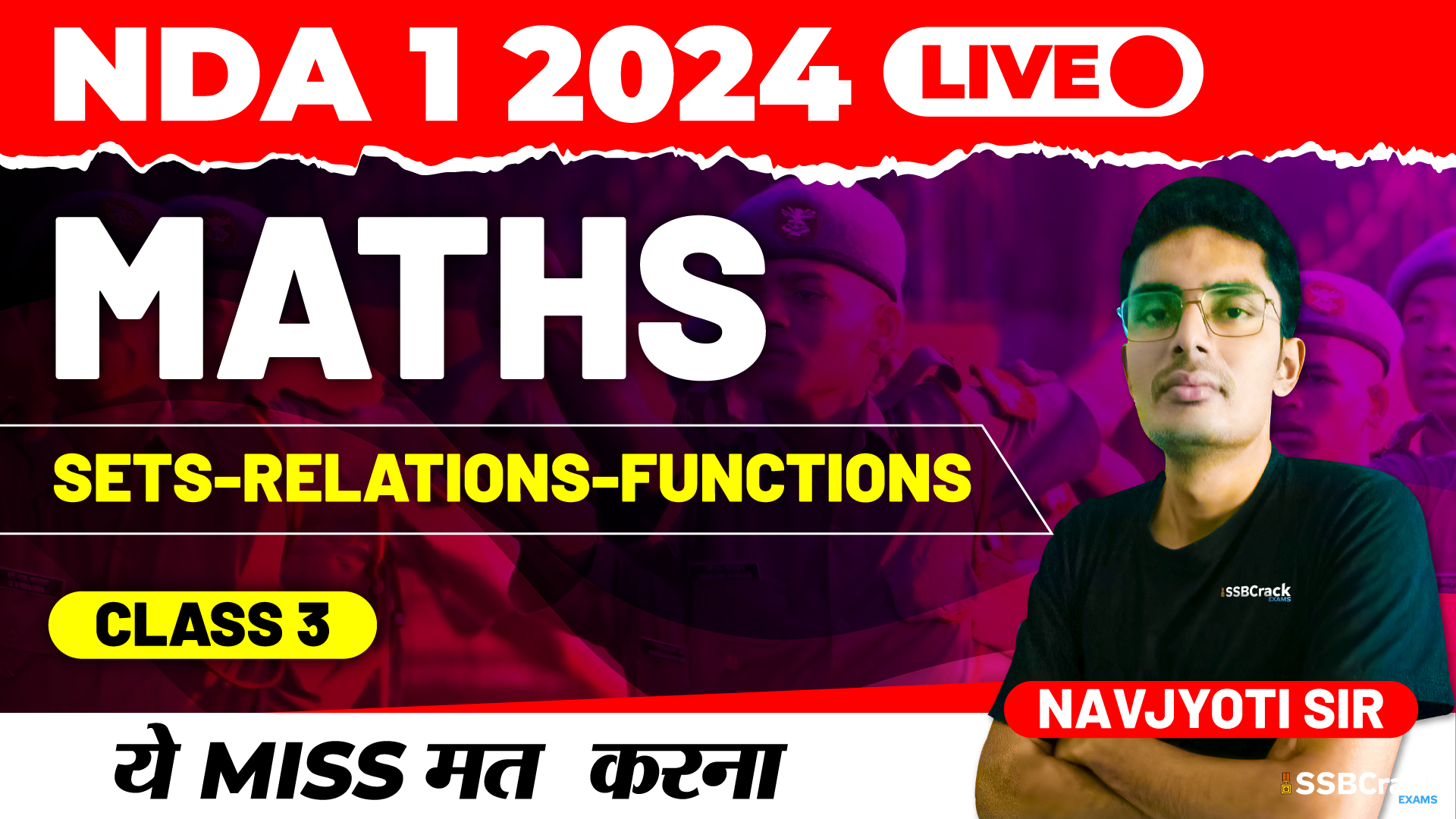In the pursuit of mathematical excellence for exams like NDA 1 2024, a comprehensive understanding of functions is indispensable. This article aims to shed light on the key insights from the class, focusing on essential concepts related to functions, including their definition as a special kind of relation, types (one-one, many-one, onto, and bijective functions), inverses, and the composition of functions. Additionally, the class involved practical application through problem-solving questions.
Understanding Functions: A Special Kind of Relation
The class commenced with a fundamental exploration of functions as a special kind of relation. Participants revisited the concept of relations, understanding how functions represent a specific type of relationship between elements of two sets. The emphasis was on how each input in the domain is uniquely associated with an output in the codomain, distinguishing functions from general relations.
Types of Functions: Navigating Uniqueness and Surjectivity
The discussion seamlessly transitioned into exploring different types of functions, focusing on the uniqueness and surjectivity of their mappings. Participants gained insights into one-one functions, where each element in the domain maps to a distinct element in the codomain; many-one functions, where multiple elements in the domain may map to the same element in the codomain; onto functions, ensuring that every element in the codomain has a pre-image in the domain; and bijective functions, combining the features of one-one and onto functions.
Inverses and Compositions: Unraveling Mathematical Symmetry
The class delved into the concept of inverses, showcasing how certain functions can be “undone” by their inverse functions. Participants explored the conditions for the existence of inverses and the idea that composing a function with its inverse results in the identity function. The discussion highlighted the symmetry between a function and its inverse, offering a deeper understanding of the interplay between mathematical operations.
Problem-Solving Approach:
The class adopted a problem-solving approach, guiding participants through the resolution of questions that ranged from basic to advanced. This approach not only honed analytical skills but also equipped participants with strategies to approach a variety of function-related problems. The emphasis was on building a problem-solving mindset that is crucial for success in exams like NDA 1 2024.
Conclusion:
In conclusion, NDA 1 2024 Exam Live – Maths – Sets Relations and Functions – Class 3 stands as an invaluable resource for aspirants seeking excellence in mathematics. By unraveling the intricacies of functions, their types, inverses, and compositions, the class provided a comprehensive understanding of these fundamental mathematical concepts. The addition of practical application through problem-solving, discussions on a problem-solving approach, and a thorough exploration of the interplay between functions and their inverses makes this live class an essential asset for those aiming to excel in competitive exams.


















